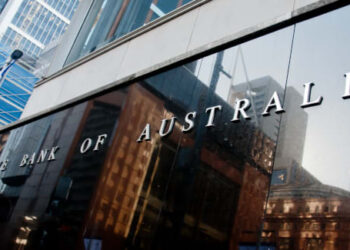Women, on average, make up around 27 per cent of investment management teams in Australia, according to a recent study conducted by Storniolo Consulting.
Commenting on the findings, Financial Services Council (FSC) chief Blake Briggs said given the figure has remained largely stable in recent years highlights the ongoing challenge of achieving greater diversity in the funds management industry.
Speaking to Ausbiz last week, Briggs explained that diversity isn’t just nice to have, but a business imperative.
“It’s about top talent, at the end of the day,” the CEO said. “So if you think about funds management as a highly competitive industry, where the returns that you’re generating for your clients and your customers is paramount, it’s the be-all and end-all of investment.
“If you think through priding yourself on having the smartest people, the best returns and the best capabilities in your organisation, you’d be crazy to not be able to just pick the best regardless of their background or gender.”
Briggs also pointed out that this is the fourth year the FSC has tracked female participation in the industry, and while some progress has been made, the effort to bring more women into funds management remains critical.
“I think what we’re willing to show as well is by staring into some of these challenges, the industry is taking it seriously,” he said, noting that a majority of the feedback they have received has been in regard to the “pipeline challenge”.
“So, getting really intelligent women out of school and into financial services and funds management in particular, and then getting them on that executive pipeline,” Briggs said.
To address this, some of the key efforts the FSC has observed, particularly among global players, is moving existing employees through MBA programs to better prepare them for C-suite roles.
Additionally, some organisations are going directly to universities, creating programs where women are included in investment teams for extracurricular activities, while others are targeting high schools to identify and encourage young women interested in finance.
“There’s a range of really good projects underway, and we’re hopeful to be able to show the progress of that.”
Otherwise, Briggs warned that without progress, the industry risks losing top talent to other sectors.
“You can have a great pipeline of highly skilled, highly qualified women coming into the industry, and if the industry doesn’t support all its employees then you could well lose them to other sectors,” he said.
The report also revealed other key findings, including that 94 per cent of organisations are tracking gender diversity within their investment management teams. Additionally, 72 per cent of respondents have set formal diversity targets for their organisations, a significant increase from 56 per cent in 2023.
Storniolo Consulting managing director Cecilia Storniolo said on the results: “The survey highlights there are investment managers who are leading the way for diversity, including gender diversity, and it’s not necessarily just the bigger, most well-resourced funds that are doing the most.
“Funds of all sizes have varying programs and metrics they are using to track diversity and this survey contributes to the literature, allowing funds to benchmark themselves against other Australian businesses.”







